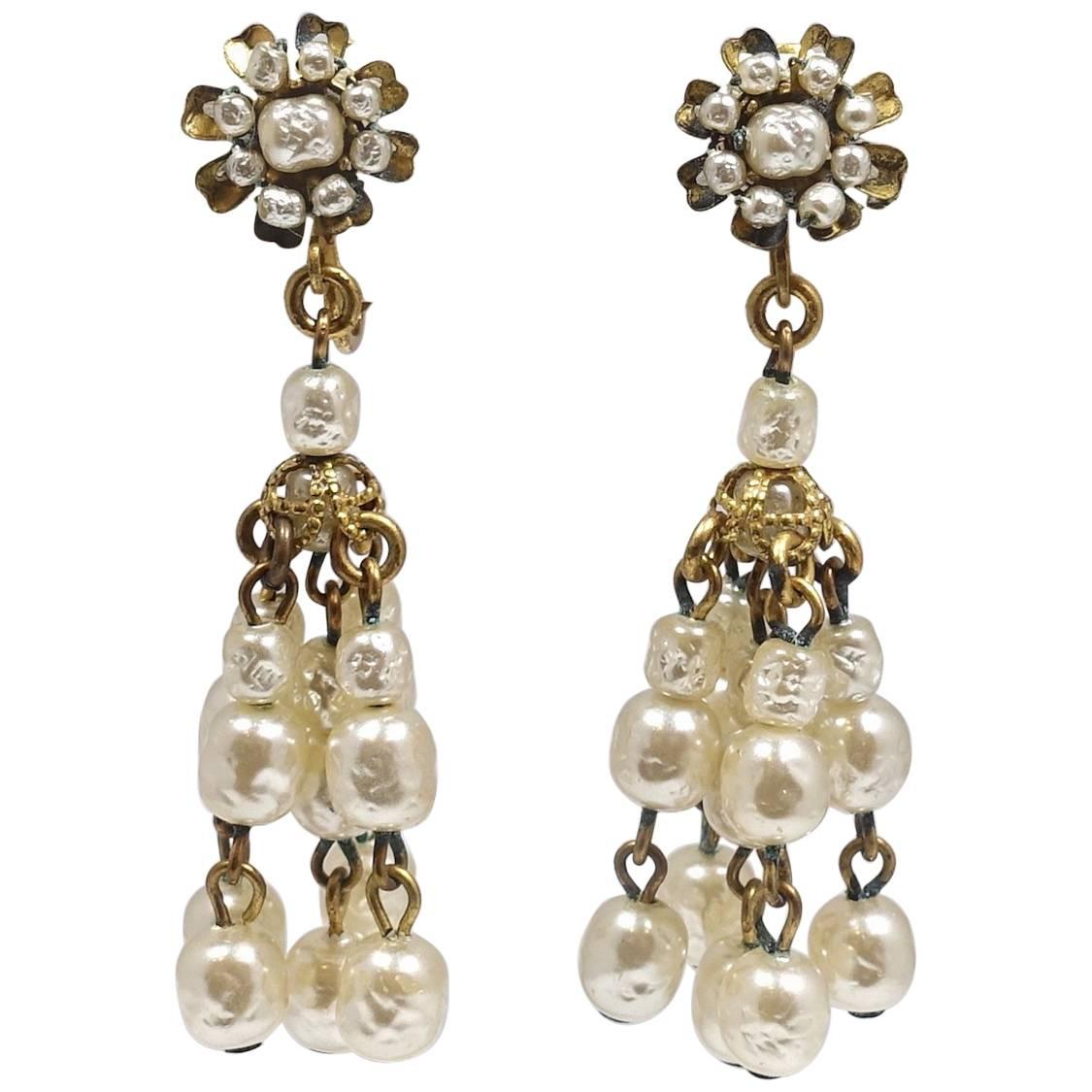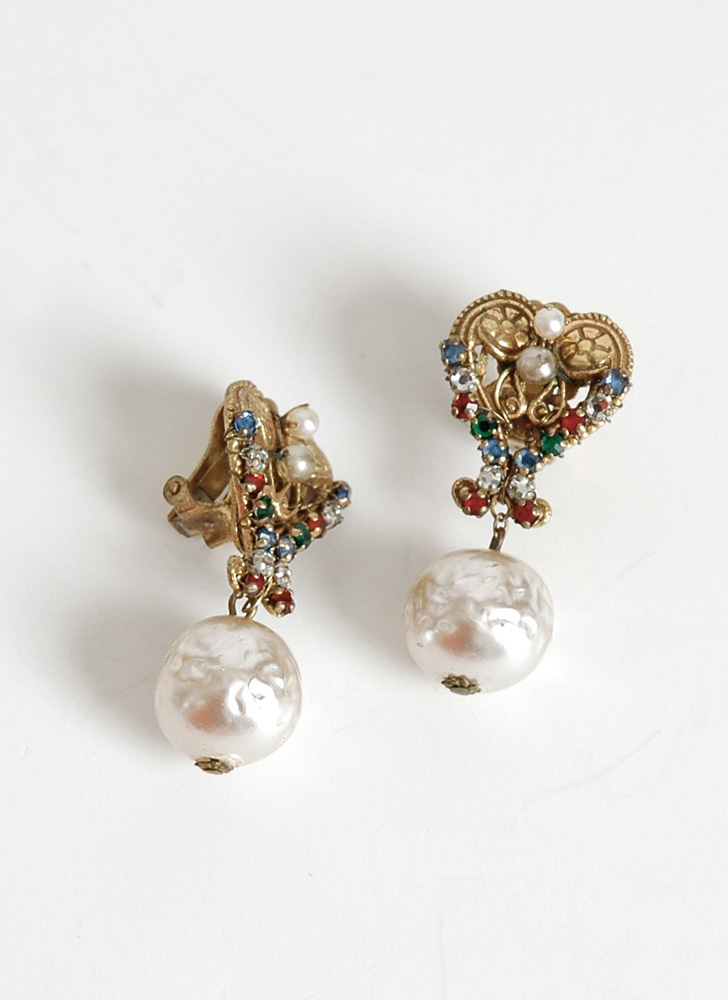
The hooks were signed ''MIRIAM HASKELL'' and were usually decorated, either with an eight-petal ''flower'' with pearls/beads as petals, or, more rarely, a dove or a turtle attached to the top of the hook. It consisted of a distinctive hook on one end and an extender on the other consisting of several pearls or beads. The other main clasp used was a very simple spring ring clasp but distinctive as it did not have the protruding prong (the ''thumb'' part).Īfter the war, during the signed period, Haskell introduced the hook and tail design to allow the necklace length to be varied. Early unsigned necklaces tend to have box clasps which were quite elaborate and decorated with pearls, beads or rhinestones, and either round, or oblong if the piece had multiple strands. Thus if you have a flat back piece it dates from c1980 to the present.Ĭlasps are an important element in identifying Haskell pieces. This tag was used until the late 1970''s, but it was then changed to a similar tag but without the stamping coming through to the reverse (''flat back''). This tag was usually attached to the back of the piece but was also used as a hangtag. The stamping came through to the other side, but indented and, of course, reversed.

Then in the early 1950''s the tag was changed to an flat oval shape with ''MIRIAM HASKELL'' stamped on to it. This probably began in 1947/48 but was not put on all pieces. The first signature was a semicircular plaque (horseshoe) that was attached to the back of the piece. It was only in the 1940''s that a permanent signature was attached to protect the Haskell name from cheaper competition that imitated her style. At this time the company did not sign any of its pieces with a permanent tag, but only a paper one (black and gold). Please note, comments must be approved before they are published.Miriam Haskell set up her business in 1926 and soon afterwards took on Frank Hess as her chief designer. To see more examples of Haskell's work, visit my Pinterest page by clicking here. To see what Miriam Haskell pieces are available for sale in my shop, just click here.

Because many pieces were made with specialty stones, missing stones can be difficult to replace. Also, look for pieces that have all the stones in place. "Greenies" can be extremely difficult to clean.
MIRIAM HASKELL EARRINGS FREE
If you're starting a collection, look for pieces that are free of corrosion on the metal. Prices range from medium to high and of course are affected by condition and rarity.Ĭomplimentary Necklaces and Cuff Bracelet NECKLACES Today Miriam Haskell pieces are very popular among collectors and can be found in the secondary market. As a general rule, pieces from the 1920 and 30s were not signed some pieces from the 1940s were hallmarked and, from the 1950s forward, most were hallmarked. These signature elements help the collector identify Haskell pieces as many pieces are not signed or hallmarked. Miriam Haskell jewelry has a number of signature elements including: Captioned Joan Crawford Wearing Miriam Haskell BroochĬrawford Wearing a Haskell Pearl Necklace, 1955 One of her most loyal celebrity customers was Joan Crawford and it is thought that Crawford owned nearly every Haskell design.įrom the internet.

And together they created costume jewelry for celebrities and high society women. There is some evidence that they worked in tandem, but whatever the creative breakdown, Hess was the man behind the woman. Haskell's creative director, Frank Hess, is usually credited as her main designer. She opened her first jewelry store in New York City in 1926 and produced jewelry through the 1960s. Miriam Haskell was a 20th century American costume jewelry designer whose work complimented high fashion of the day.


 0 kommentar(er)
0 kommentar(er)
